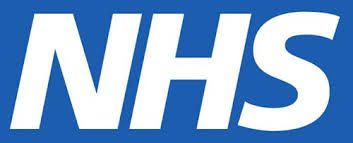The newly launched national Blood Pressure Optimisation Programme has a big ambition – to prevent heart attacks and strokes at scale by helping primary care to do things differently. As we emerge from the latest wave of the pandemic and focus our energies on recovery and transformation of healthcare, England’s 15 Academic Health Science Networks (AHSNs) will be supporting integrated care systems (ICSs) and primary care networks (PCNs) to innovate in the diagnosis and management of hypertension.
Why the focus on hypertension?
Cardiovascular Disease (CVD) causes a quarter of all deaths in the UK and is a major driver of health inequalities, accounting for a quarter of the life expectancy gap between deprived and affluent communities. The global burden of disease study identified high blood pressure and high cholesterol as leading risk factors that drive mortality and morbidity from CVD. These risk factors are high impact but also highly modifiable. Treatment of high blood pressure and high cholesterol substantially lower the risk of CVD. Despite this, both risk factors are underdiagnosed and undertreated. Around 30% of people with hypertension are unaware of their condition, and pre-pandemic Quality and Outcomes Framework (QOF) data showed that around 1/3 of people with diagnosed hypertension are not treated to target, with substantial variation across the country. Most recent QOF data (2020-21) shows that optimisation rates have deteriorated substantially during the pandemic as patients’ access to healthcare has been disrupted.
Prevention of CVD in people with hypertension requires optimal control of both blood pressure and cholesterol. Around 50% of people with established CVD also have hypertension. All of these patients should be offered lipid lowering therapy in addition to lifestyle advice, but up to half are either on no treatment or suboptimal treatment. By targeting optimisation of blood pressure and cholesterol in this high-risk cohort we will prevent large numbers of heart attacks and strokes in a short time frame.
The historical challenge of optimising hypertension management
The management of high blood pressure has made limited progress over the last 30 years with optimal treatment rates rising from 50% (the so-called ‘rule of halves’) to only 70% (QOF 2019-20). This is because management in real world primary care is difficult, where GP consultations are time pressured and complex, and where multimorbidity is the norm. In addition, raised blood pressure is generally an asymptomatic condition, so people are unaware that they have undiagnosed poorly controlled hypertension.
History shows us that while education, guidance and incentives in primary care are important, they are insufficient to drive the improvement that is needed. A central principle of the NHS Long Term Plan CVD prevention programme, with its ambition to prevent 150,000 heart attacks, strokes and cases of dementia, was that if this historic under treatment is to be reversed it will require primary care to ‘do things differently’ and at scale.
The National Blood Pressure Optimisation Programme
The national AHSN Network Blood Pressure Optimisation Programme will build on the success of BP@home that has distributed free blood pressure machines to eligible patients. The Blood Pressure Optimisation Programme will focus on improving the management of hypertension, case finding for the undiagnosed and targeting health inequalities, in addition to support for remote monitoring. It will do this by helping primary care to do things differently using the Proactive Care Frameworks developed by UCLPartners.
The frameworks cover six conditions including hypertension and have three elements:
- systematic risk stratification
- prioritisation of those at highest risk for treatment optimisation
- deployment of the wider workforce to support education, self-management and behaviour change.
How does it work in practice?
A practice or PCN runs the automated searches in EMIS or SystmOne and this produces lists of patients in four priority groups. In a typical practice, this shows that over half of patients on hypertension register have a normal latest blood pressure and do not need to see a clinician urgently. Around 18% have blood pressure above 160/100 or above 140/90 with significant co-morbidities and therefore do need more urgent review. A further 15% have no record of a blood pressure check in 18 months, and a healthcare assistant (HCA) can contact these patients to obtain up to date readings. A further 15% of patients have a blood pressure above 140/90 and their review appointments can be scheduled over a realistic time period.
This approach helps practices to manage workflow at a time when capacity is so limited, it provides reassurance that we are reaching the patients who most need treatment optimisation while providing appropriate care to all, and it helps GPs meet QOF and other quality improvement targets.
In addition to the stratification tools, the Proactive Care Frameworks include a range of free resources to support self-management. This includes digital and other tools that staff such as health care assistants, wellbeing coaches or care coordinators can use to help a patient to understand their conditions, to access an NHS blood pressure monitor or buy a validated and affordable monitor of their own, and to teach patients to measure their blood pressure accurately.
From recovery to transformation
The Blood Pressure Optimisation Programme led by the AHSNs will support ICSs and PCNs to innovate in order to achieve the long-term condition recovery that is now a priority as we emerge from the pandemic. And by helping primary care teams to transform the way we provide care for our patients with hypertension, it brings the opportunity to deliver early on the NHS Long Term Plan ambition of preventing 150,000 heart attacks, strokes and cases of dementia.
Stay up to date with the Blood Pressure Optimisation Programme and the AHSN Network by signing up to our newsletter.

Grace Gimson is the founder and CEO of Holly Health, a digital platform dedicated to transforming healthcare through preventive and person-centered digital health coaching. The platform aims to support individuals struggling with mental or physical health. Grace is a generalist with a background in operations, business leadership, and scaling tech startups such as Deliveroo. [...]

HN (Health Navigator) is an AI-powered health innovation that enables preventative care through predictive analytics. Founded in Sweden by Dr Joachim Werr, a former A&E consultant, HN is now supporting healthcare systems across the UK to identify high-risk patients before they reach crisis point. Joachim shares the journey behind HN and the transformative impact of [...]

The government has set out three shifts it wants to see happen: treatment to prevention, hospital to community, analogue to digital. HealthTech has a crucial role in supporting the delivery of all three. But using technology to help deliver these changes requires procuring the technology, and when all the noise is about there being no [...]









